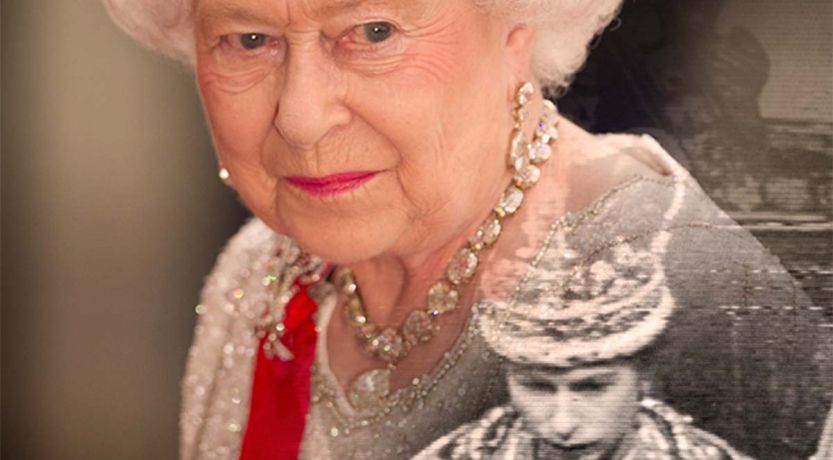Queen Elizabeth II acceded to the throne Feb. 6, 1952. Her devotion to her people and duties are legendary. What can we learn from this remarkable monarch?
Though she came to the throne in February, the official celebrations marking Queen Elizabeth II’s platinum jubilee—70 years of service to the 54 nations making up the Commonwealth today—will be June 2 to 5, 2022.
To many of the 2.4 billion citizens of the Commonwealth, she represents an example of grace, faithfulness, modesty and Christian values. But her life has not been easy.
70 years of service
The length of her reign is indeed special, but even more than how long she has ruled, Queen Elizabeth II stands out as beloved and respected for her behavior and dedication to her people.
In recent years, there have been many critics of royal heritage and privilege, yet in the United Kingdom few would take issue with the devotion with which Queen Elizabeth II has approached her many roles.
Unexpected accession to the throne
Britannica.com provides her full name and title: “Elizabeth Alexandra Mary, officially Elizabeth II, by the Grace of God, of the United Kingdom of Great Britain and Northern Ireland and of her other realms and territories Queen, Head of the Commonwealth, Defender of the Faith.”
Elizabeth was born April 21, 1926, in London, England. As a young girl, she was never expected to rule. Elizabeth was the elder daughter of a younger son of King George V. It seemed the young Elizabeth had little chance of becoming queen until her uncle, Edward VIII, suddenly abdicated on Dec. 11, 1936. Overnight her father became King George VI, and Elizabeth became next in line to the throne.
Elizabeth acceded to the throne after her father’s untimely death on Feb. 6, 1952.
If you would like to read more about Queen Elizabeth’s accession and events in the early part of her reign, please refer to our blog posts “The Queen’s Sapphire Jubilee” and “The Dedicated Queen Turns 90.”
Promise from a princess
On her 21st birthday, in April 1947, Princess Elizabeth broadcast a promise from Cape Town, South Africa, to the Commonwealth. The young princess said, “I declare before you all that my whole life whether it be long or short shall be devoted to your service and the service of our great imperial family to which we all belong.”
She has carried out this promise, becoming perhaps the most traveled ruler in history. Five years ago, the Daily Telegraph estimated her travels had taken her more than 1,032,500 miles (42 times around the earth) as she became familiar with her Commonwealth subjects and rulers.
In 2015 she surpassed Queen Victoria as the longest-reigning monarch in British history.
Whether by choice or accident, the queen took steps that brought the royal family into new territory. Allowing the televising of selected aspects of their domestic life in 1970 and permitting the dissolution of her sister Margaret’s marriage in 1978 brought more attention to what was often portrayed as an obsolete and costly institution.
The decade of the 1990s brought acute criticism on the “royals.” The queen’s eldest son, Prince Charles, separated from the popular icon, Princess Diana. Prince Andrew separated from Sarah, duchess of York. Princess Anne, the queen’s only daughter, divorced. And parts of the royal residence at Windsor Castle were destroyed by fire. Later that decade, Diana died in a car crash in 1997.
In the queen’s golden jubilee year in 2002, she lost her sister Margaret and her mother, the highly respected and loved “Queen Mum,” who died at 101 years of age.
After the marriage of Prince William (Charles’ eldest son from his marriage to Diana) to Kate Middleton, the royal family regained some standing with the public. Both William and his younger brother Harry served in the armed forces. They offered a fresh outlook to those of their generation.
Yet strangely, it was a television series, The Windsors in 2016, that brought back an increasingly positive note to the British royal family.
As constitutional monarch, Queen Elizabeth has interacted with 14 different prime ministers through the years. The first was Winston Churchill, and the list includes Margaret Thatcher and Theresa May, the only two female British prime ministers in history. One of her regular duties has been to open new sessions of Parliament explaining what “my government” plans to accomplish that year.
Queen Elizabeth married her childhood sweetheart, Philip Mountbatten, on Nov. 20, 1947. After 73 years of marriage, Prince Philip, the duke of Edinburgh, died in 2021 just two months before his 100th birthday. He had constantly been by her side during her reign until, at the age of 95, he retired from active engagements in August 2017.
Public engagements now increasingly fall to younger members of the royal family, such as Prince Charles, heir to the throne, and Prince William, his firstborn son. They are increasingly lessening the load on the queen.
Why do her subjects love her?
There are many reasons to honor and love Queen Elizabeth. Most of us only dream of reaching her age of 95 and still being relatively active and healthy. Many look at her example and love for her people and feel love and respect for her as they would for their own mother or grandmother.
As we consider her approach to life and her interaction with others, we note how positive results come from following biblical principles.
Long life, definitely a milestone Elizabeth II has reached, was promised by God to those who honor their parents (Exodus 20:12). I have no doubt she respects the memory of her late father and mother. Perhaps, as governor of the Church of England, she has also followed the scriptural injunction for royalty to be very familiar with the content and practice of God’s Word (Deuteronomy 17:18-20).
Qualities we can emulate
Here are some nuggets we can appreciate from the unprecedented reign of a graceful and patient monarch:
Accept the mantle of responsibility: Initially the young Elizabeth was not expecting to become queen, nor did she understand the many responsibilities that would be laid on her shoulders. Once her father, King George VI, had been crowned in 1936, how aware was 10-year-old Elizabeth that she was in line for royal duties over as many years as God would give her?
Yet by age 21 she was willing to promise, “My whole life whether it be long or short shall be devoted to your service and the service of our great imperial family to which we all belong.”
This should remind us of the Christian’s calling to serve humanity as a whole as a ruler with Jesus Christ at His return (Revelation 5:10; Luke 19:11-19). For Christians, the training to be able to take on such responsibility is happening right now through overcoming the lusts of the flesh and the influence of Satan and his society (Revelation 2:26).
Serve and care: In her many overseas visits and when fulfilling charitable duties in Britain, the queen meets and spends time with people she cares for. They do not live in palaces or own vast estates. Video recordings of her walkabouts show her greeting people and accepting bouquets of wild flowers from children. The queen always shows a genuine, heartfelt interest in those she meets.
We must similarly follow the pure example of Jesus Christ who ate and conversed in the same manner with those who were often treated with disdain (Matthew 9:9-13). Jesus also had a special love for the humble teachability of children and encouraged them to come to Him (Matthew 18:2-5; 19:13-15).
Handle the ups and downs of life with dignity: Queen Elizabeth II has no doubt experienced and learned many lessons from family and regal life during her 70 years of rulership.
With the death of her husband, the queen no longer has the support of perhaps her greatest admirer, Prince Philip. But like her mother, she will “keep calm and carry on.”
Whether royalty or commoner, we all deal with times of sorrow and suffering. But the Bible has good news. Everyone going through these ups and downs of life can know God’s Purpose for You and that a wise and kind Ruler is coming soon who will rule for, not 70, but a thousand years (Revelation 20:4). In fact, we are told there will be no end to His Kingdom and the peace and joy it will bring (Daniel 2:44; Isaiah 9:7).
Sidebar: Is There a Connection Between the British Monarchy and the Bible?
When the patriarch Jacob bestowed blessings on his 12 sons, he gave a unique blessing to his son Judah: “The scepter shall not depart from Judah” (Genesis 49:10). A scepter is a symbol of royal authority.
That promise began to be fulfilled when God inspired Samuel to anoint a descendant of Judah, David the son of Jesse, as king of Israel (1 Samuel 16). Though not a perfect man, David faithfully reigned over Israel for 40 years and was “a man after [God’s] own heart” (Acts 13:22).
As a result of David’s faithfulness, God entered into a unique covenant with him—often called the Davidic covenant. As a part of this covenant, God promised that He would “establish the throne of his kingdom forever” (2 Samuel 7:13). This covenant was reiterated hundreds of years later by the prophet Jeremiah: “For thus says the LORD: ‘David shall never lack a man to sit on the throne of the house of Israel’” (Jeremiah 33:17). Ultimately, Jesus Christ is prophesied to sit on that throne (Luke 1:31-32).
But students of history understand that the Davidic throne was thought to be destroyed in 586 B.C. when the Babylonians conquered Judah and imprisoned the last Davidic king, Zedekiah, until his death (2 Kings 25:4-7; Jeremiah 52:11). We also read that in an attempt to end the Davidic line, the Babylonian king brutally executed Zedekiah’s sons (2 Kings 25:7).
This was an attempt, no doubt inspired by Satan, to wipe out the Davidic royal line in order to cause God’s covenant with David to fail. But God’s promises and covenants never fail.
The book of Jeremiah provides some fascinating clues as to how this royal line would continue. In two passages in his book, Jeremiah makes a specific note that King Zedekiah’s daughters survived the Babylonian captivity and were taken, along with Jeremiah himself, to Egypt (Jeremiah 41:10; 43:5-6).
There is no more mention of the fate of the king’s daughters in the Bible. Could Jeremiah have included this detail about Zedekiah’s daughters to be a clue as to how David’s royal line would continue? Though historical details from this period are sketchy, some have pointed to the possibility that one of Zedekiah’s daughters could have been transported to Ireland by Jeremiah to be married into another royal line, thus extending the throne of David forward through history.
Could the occupants of the British throne be descended from David through one of King Zedekiah’s daughters? It is interesting that many symbols associated with Ireland and the British throne are similar to symbols associated with the Davidic dynasty.
Though it’s difficult to prove definitively through secular history, this could explain why the British throne has endured through the centuries to this very day.
To read more about this fascinating subject, see pages 46-53 of our booklet The United States, Britain and the Commonwealth in Prophecy.
Erik Jones






